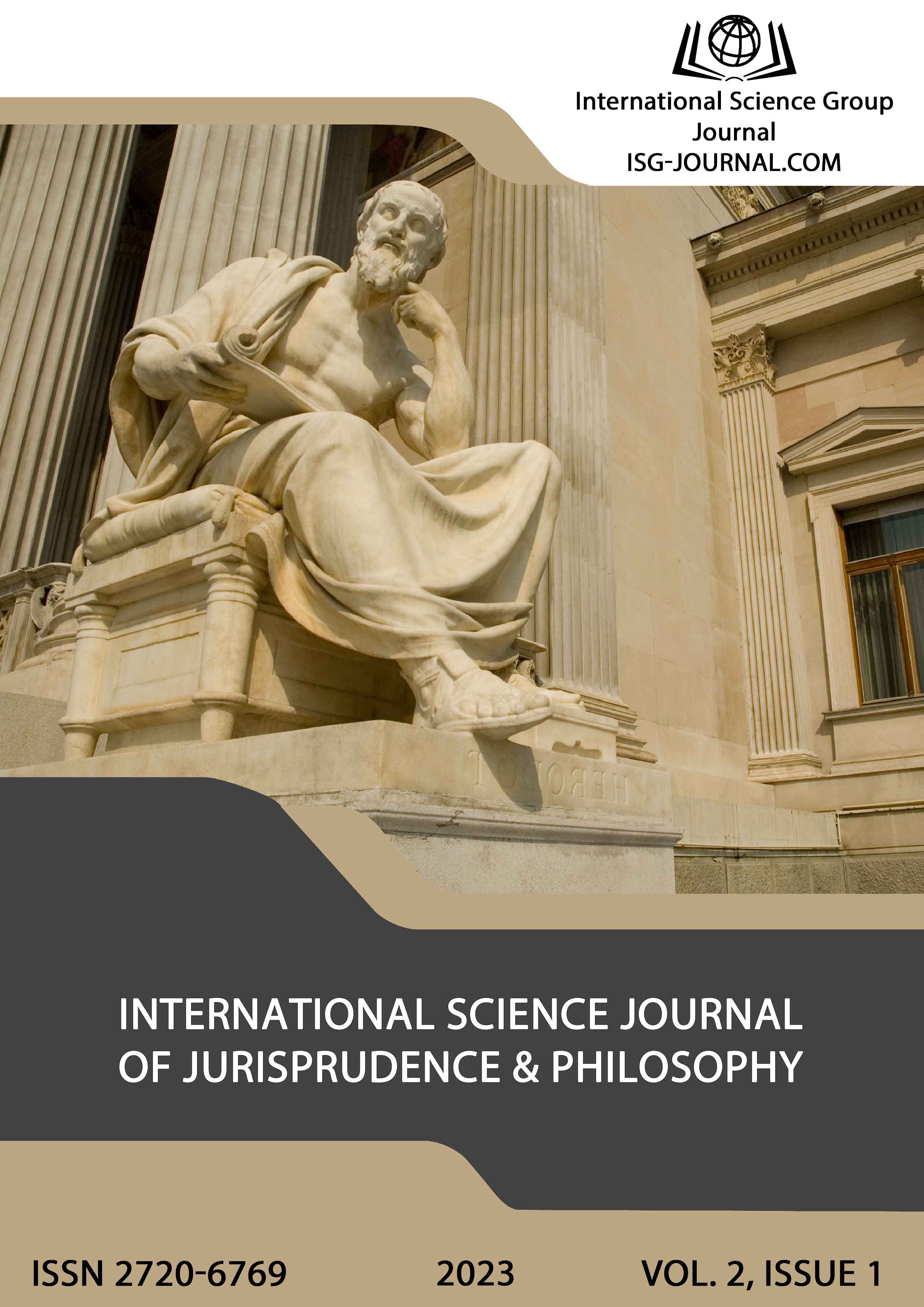To the problem of gender equality and the legal status of women in the modern People's Republic of China
DOI:
https://doi.org/10.46299/j.isjjp.20230201.02Keywords:
gender equality, women's rights, discrimination, social protection, employment, familyAbstract
China is a developing country with the largest population in the world. Of the total population of 1.3 billion, women make up about half. Since the founding of the People's Republic of China in 1949, especially after the adoption of reform policies in the late 1970s, along with the continuous growth of the Chinese economy, women have been given more guarantees to realize equal rights and opportunities with men. The state has continuously intensified its efforts to develop, review and enforce relevant laws and regulations to protect women's legitimate rights and interests. A number of measures have been taken to ensure equal employment opportunities for women and men, joint use of economic resources and social development results. Over the past few years, the Chinese government has formulated and implemented support policies that encourage women to start businesses on their own initiative, and provide them with incentives in the form of training subsidies and guaranteed loans. Governments at all levels have also adopted many pro-women policies, such as creating public welfare jobs, opening job centers, monitoring gender-based employment discrimination against women, and helping women find work. The Marriage Law of 2001 confirmed the basic principle of equality between men and women, emphasized the equal status of husband and wife and their equal rights and responsibilities in marriage and family, and added articles on the prohibition of domestic violence and bigamy in order to protect women's rights. At the same time, the government is well aware that in the process of restructuring the economy, China faces new situations and challenges in gender equality and the legal development of women. Chinese women are becoming increasingly diversified in terms of their social status, and therefore their needs for means of livelihood, development and protection of their rights and interests also differ. There is a clear imbalance in the development of women of different regions, social status and groups; the outdated conventions and custom of inequality between men and women, inherited from Chinese history and culture, have not yet been completely eradicated.
References
Whyte, M.K. (2005) Continuity and Change in Urban Chinese Family Life . The China Journal, 53, 9 – 33. Https://doi.org/10.2307/20065990
ACWF-2000, “Di er qi Zhongguo funü shehui diwei chouyang diaocha zhuyao shuju baogao” (Executive Report of the second sample survey on Chinese Women’s Social Status), 2001,; ACWF-2010, “Di san qi Zhongguo funü shehui diwei diaocha zhuyao shuju baogao” (Executive Report of the third sample survey on Chinese Women’s Social Status), Funü yanjiu lun cong, Vol. 6, No. 108, 2011, pp. 5 15. The data from ACWF-1990 referred to here is taken from ACWF-2000. Available at: https://vdoc.pub/documents/analysing-chinas-population-social-change-in-a-new-demographic-era-640o3nggu630
Excerpt from Article 48 of the 1982 Constitution of the People's Republic of China ( 1982 ) Available at: /https://chinahelp.me/information/konstitutsiya-knr-1982-g-s-izm-1988-1993-1999-2004-gg
Johnson, K.A. (1983) Women, the Family and Peasant Revolution in China. Chicago : UNIVERSITY OF CHICAGO PRESS, 292. Available at: Https://press.uchicago.edu/ucp/books/book/chicago/W/bo5975509.html
All-China Women’s Federation. (2000) Available at: / https://www.un.org/en/conferences/women
Chapter 4 of the Action Program adopted during the Cairo International Population Conference in 1994 begins thus: “The emancipation and empowerment of women and improvements in their political, social, economic and health status is an end in itself”; “The fundamental rights of women and girls are inalienable and indivisible from the universal rights of Man” (Extract from the Action Program of the 4th World Conference on Women held in Beijing, 15 September 1995). Available at: / https://www.un.org/en/conferences/women/beijing1995
The member-states of the United Nations agreed on eight essential goals to be reached by 2015. These “Millennium Development Goals” (mdgs) are as follows: to eradicate extreme poverty and hunger; to achieve universal primary education; to promote gender equality and empower women; to reduce infant mortality; to improve maternal health; to combat HIV/AIDS, malaria, and other diseases; to ensure environmental sustainability; to develop a global partnership for development. Available at: / https://www.un.org/millenniumgoals/
Program for the Development of Chinese Women. (2010) Available at: www.china.org.cn/english/features/cw/140979.htm (consulted on 25 September 2012 ).
Burnett, J. (2010) Women’s Employment Rights in China: Creating Harmony for Women in the Workplace. Indiana Journal of Global Legal Studies, 2(17), 289 - 318, doi: https://www.repository.law.indiana.edu/ijgls/vol17/iss2/8/
Perry, E. J., Selden, M. ( 2010 ) Chinese society: Change, conflict and resistance . London: ROUTLEDGE, 162-186. Https://doi.org/10.4324/9780203856314
Roberts. C. ( 2012 ) Far From a Harmonious Society: Employment Discrimination in China . The Santa Clara Law Review , 4(52), 1531–1560.
Available at: https://digitalcommons.law.scu.edu/lawreview/vol52/iss4/11
Gender Equality and Women’s Development in China. (2012) Available at: / http://www.china.org.cn/english/2005/Aug/139404.htm (consulted on 25 September 2012).
All China Women’s Federation. ( 2008 ) Annual Report on Gender equality and women’s development in China. Beijing. Social Sciences Academic Press.. , 409 - 410. Available at: https://www.ohchr.org/sites/default/files/lib- docs/HRBodies/UPR/Documents/Session4/CN/ACWF_CHN_UPR_S4_2009_All- ChinaWomensFederation.pdf
Population Census Office and National Bureau of Statistics of China. ( 2010 ) Zhongguo 2010 nian renkou pucha ziliao (Tabulation on the Population Census of the People’s Republic of China). Beijing, China Statistics Press. Available at: / http://esa.un.org/wpp/unpp/panel_population.htm
Attané, I. ( 2012 ) Being a Woman in China Today: A demography of gender . China Perspectives. 4, 17 24, https://doi.org/10.4000/chinaperspectives.6013
Downloads
Published
How to Cite
Issue
Section
License
Copyright (c) 2023 Надія Стеньгач

This work is licensed under a Creative Commons Attribution 4.0 International License.

